What to consider when organizing the layout?
Let’s start with the fact that an open, well-lit place is allocated for the vegetable garden, preferably the southern side of the plot, and from the north it is better to protect the plantings with a garden or a high hedge, or do this taking into account the prevailing wind direction.
Placing beds with vegetables or berries in the shade of fruit trees, dense bushes and large buildings is not the best idea, they will not ripen and will not fill with juice. A good harvest will be facilitated by early application of fertilizers to correct the composition and properties of the soil.
As a rule, a family of 3-5 people needs 200-300 sq. m. of land for gardening, with 50 to 100 sq. m, depending on the climate, is allocated to greenhouses and hotbeds for cucumbers, tomatoes, bell peppers and other heat-loving plants.
The place has been chosen and prepared, now you need to determine the best location of the beds on the summer cottage. Decide what and how much you intend to grow, make a list of crops, think about the required number of seeds and seedlings. On paper or in a special planning program, create a detailed plan, where the width and length of the beds, paths between them, greenhouses, hotbeds will be marked.
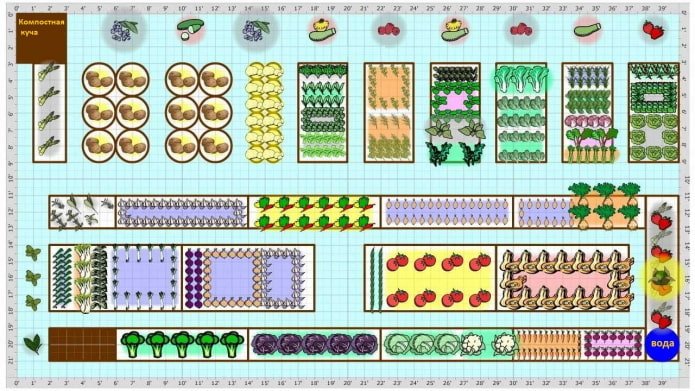
It is more reasonable to place plants that occupy the largest area in the depths of the garden, and beds with dill, parsley, onions, garlic – closer to the house, so that you can pick a bunch of fresh herbs for dinner without running around the entire area.
It is also very important to take into account the features of the relief. Ideally, the beds should be strictly horizontal, but this is not always possible. When a vegetable garden has a strong slope, you need to arrange the beds perpendicular to it so that all the plants receive the same amount of sunlight and moisture.
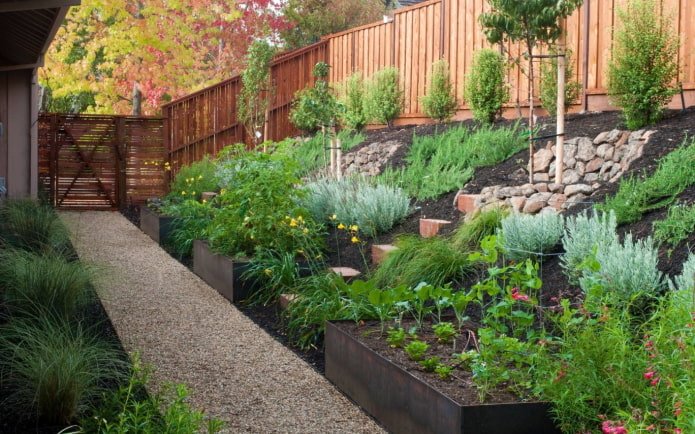
Features of crop rotation
If you grow fruit plants in the same bed year after year, the yield will inevitably decrease, since each of them takes its favorite set of nutrients from the soil. In addition, the soil accumulates decomposition products of tops and specific pests.
Crop rotation, a scientifically based order of planting crops one after another, helps to cope with this problem.
For a modest household plot consisting of a couple of dozen beds, crop rotation is too loud a word. Agricultural experts recommend adhering to the principles of crop rotation, which consist of alternating three groups: those that are economical with soil resources, those with an average appetite, and those that are gluttonous.
Group I:
- green peas;
- beans;
- lettuce;
- fennel;
- lettuce;
- parsley.
Group II:
- potatoes;
- carrots;
- radishes;
- eggplant;
- zucchini;
- onions.
Group III:
- cabbage;
- tomatoes;
- peppers;
- pumpkin;
- cucumbers;
- watermelons.
The need of vegetables, greens, flowers and berries for nutrients is easy to find out. It remains to act as follows: plant “modest” crops in the beds where the most demanding crops grew, “average” crops in their place, and “gluttons” instead. In addition, after organic lovers, those who prefer minerals grow better, and vice versa.
Some winter crops require a suitable predecessor, removed from the beds early. For example, it is better to plant garlic in the fall where the first melons were grown: zucchini, cucumbers, squash.
The table will help you plan your crop rotation in detail:

Recommendations for selecting neighboring plantings
All cultivated plants have “class” enemies: insect pests, viruses, bacteria, fungi. At the same time, enemies differ in their sympathies and antipathies – some are eaten with pleasure, while others are avoided a mile away. This can be easily used to protect your harvest when planning your garden beds.
Experienced farmers know that beans, spinach and horseradish spoil the appetite of the Colorado potato beetle when it attacks potatoes. Celery should not be planted next to root crops – it inhibits their growth. Wormwood spoils the taste of strawberries and wild strawberries.
Another table will help novice gardeners find suitable neighbors in the beds:
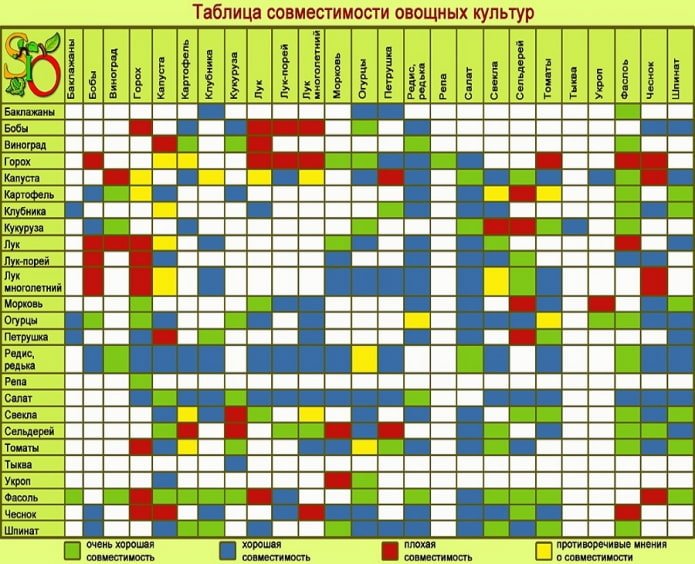
Nuances in choosing the shape and size of beds
The convenience of caring for plants and moving between them, as well as the aesthetic qualities of the garden, greatly depend on the dimensions and distances between the beds. Let’s consider each parameter in detail.
Length
How far the bed will extend depends on the area of the plot, the specific crop and the volume of plantings. A plot up to 3 meters long is usually allocated for early greens, and potato rows can go beyond the horizon – everything is individual.
Width
Here you need to proceed from how the bed will be approached: only from one side or from both. In the first case, it should be possible to reach the opposite edge (width no more than half a meter), and in the second – a little further than the middle (width no more than a meter).
Height
This indicator depends on the climate. In warm regions, the beds are arranged flush with the ground surface, and if the place is also dry, then they are sunk into the ground by 4-8 cm. In cold and humid areas, they are raised by 20-40 cm so that the soil warms up better and faster and water does not stagnate in it.
Raised beds are best fenced with boards, pieces of old slate from the roof or sheets of corrugated metal left over from the construction of a fence, as in the photo below. This gives the garden a neat appearance and simplifies maintenance.
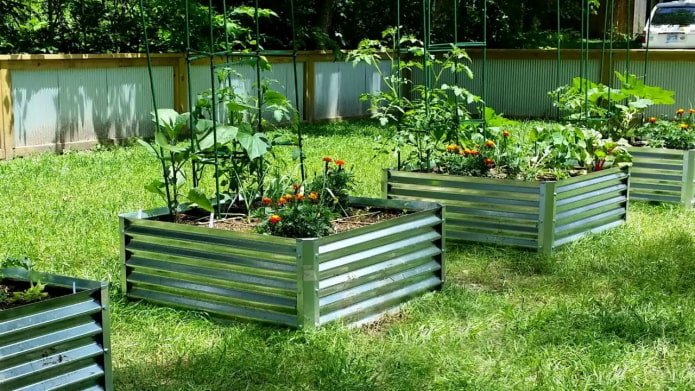
Planting
With seedlings, everything is simple: after the emergence of shoots, the plantings are thinned out, leaving the strongest and most promising sprouts at a distance of 5-8 cm from each other and forming row spacings 10-15 cm wide.
The seedlings should be placed on the minimum permissible area, for example:
- cruciferous – 40×50 cm;
- nightshade – 50×70 cm;
- melons – 80×120 cm.
Growing vegetables using vertical supports and garters allows you to save space and root seedlings more densely, not to mention the safety of the fruits and the integrity of the stems.
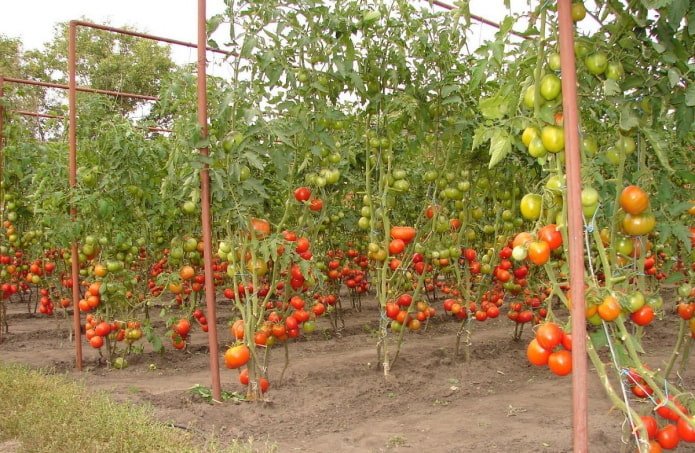
Shape of beds
A classic bed is a rectangle. To make the garden look more interesting, summer residents collect plots in groups by size or make compositions from rectangles of varying degrees of elongation. You can draw a diagonal garden path in such a composition, arrange multi-tiered beds, but keep in mind: the more complex the layout, the greater the difference in the conditions for keeping individual plants.
Triangles, diamond-shaped structures and concentric circles look impressive. In the sectors, you can alternate fruit crops with decorative ones – half a vegetable garden, half a flower bed will become a real decoration of the estate.
Some owners do not like strict geometry, so they plant vegetables, fruits, herbs, berries and garden flowers chaotically, trying to create a natural landscape design. This technique is in fashion now, but it is difficult to achieve natural beauty and harmony instead of disorder and confusion.
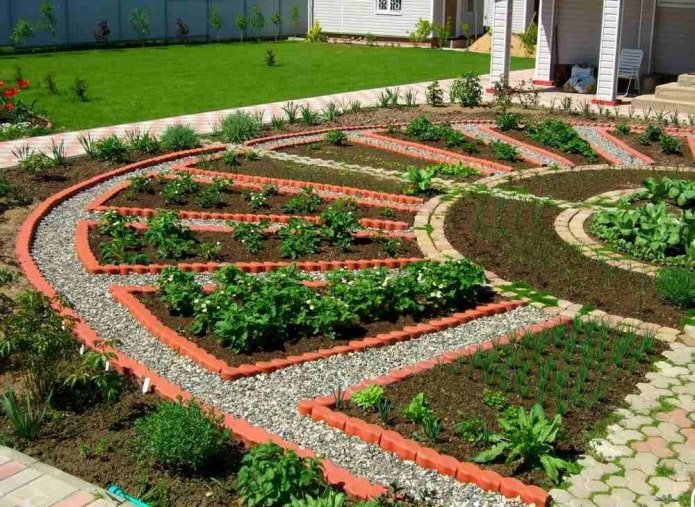
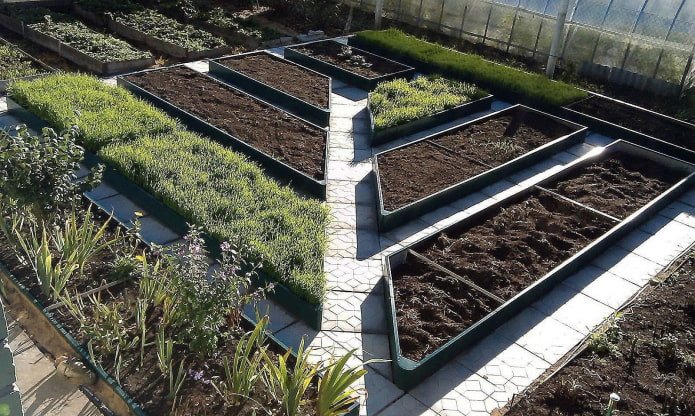
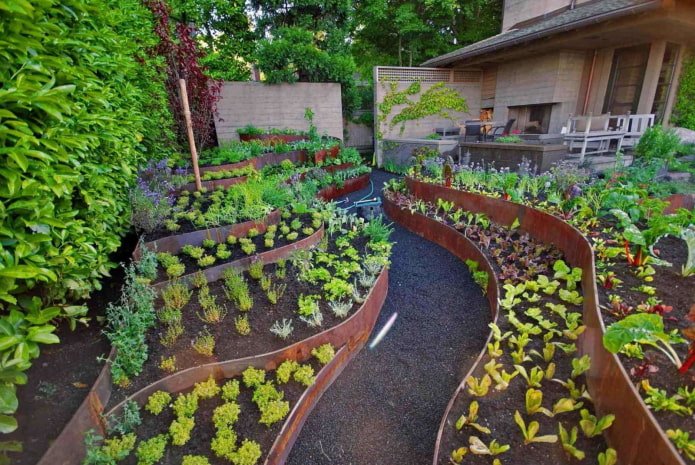
Paths
The more compact the plants, the less space is required for free movement between the beds. In the case of greens, onions, garlic or carrots, you can get by with paths 40 cm wide, and for a creeping melon, you will have to allocate at least 120 cm, because it tends to crawl onto the garden path.
It is important to provide a good covering that will not allow weeds to spread and will protect your shoes from dirt during heavy precipitation. Pave the paths between the beds with stone or wood, fill them with pebbles, sand or crushed stone.
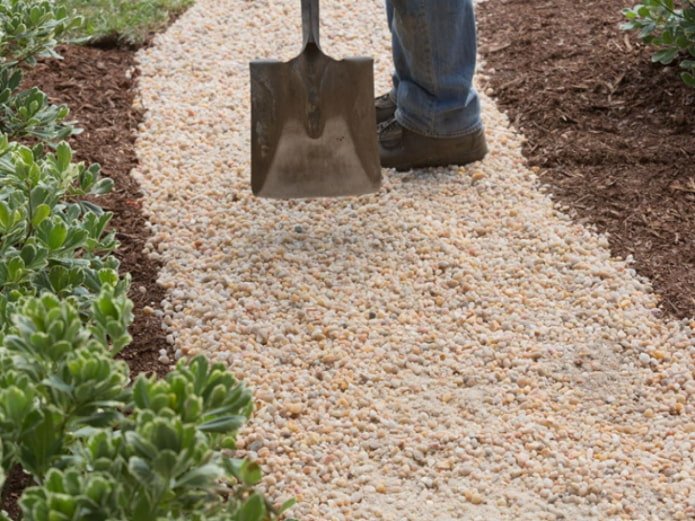
What do you need to know about watering?
If you plan to water the beds with water from the central water supply, you must first check its chemical composition. “Heavy” water filled with hardness salts is no good – it will have to settle in a barrel, an old bathtub or another accessible container for at least 12 hours, and at the same time warm up in the sun. Plants should not be watered with ice water.
Soft rainwater is beneficial for fruit and vegetable crops; containers for it can be easily installed in different parts of the dacha or near the house under a drainpipe. To make watering easier, water collectors are equipped with hand pumps and hoses are pulled along the beds. Rubber hoses bend and tear quickly; it is better to buy reinforced ones.
Drip irrigation or automatic irrigation is the most convenient. Light polypropylene pipes are laid along the rows, and water is supplied to each plant – in the first case, it is poured under the root, in the second – it is sprayed under pressure.
The arrangement of the irrigation system for the beds will cost about 35-40 thousand rubles for each hundred square meters, while the most modern designs have remote control – you do not have to go to the dacha to water the garden.
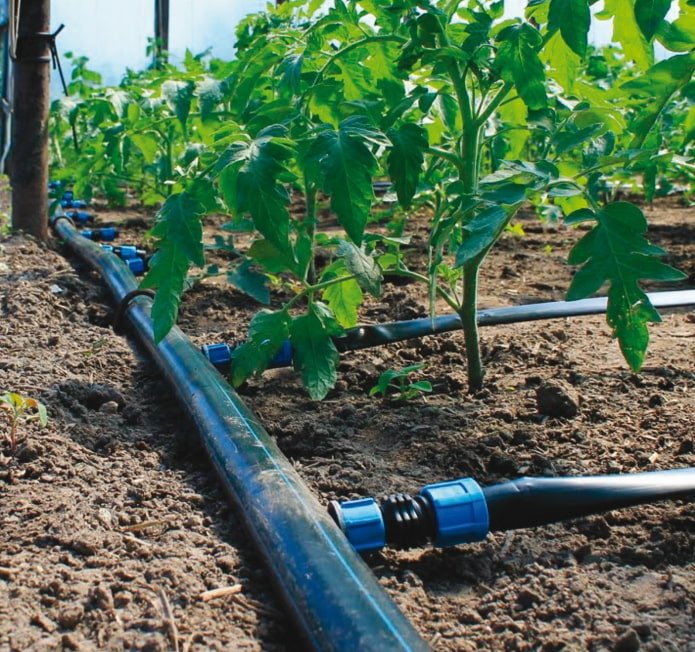
How to arrange according to the cardinal points?
The sun rises in the east and sets in the west, accordingly, in order for the beds to receive uniform and maximum intense lighting throughout the day, they need to be placed across this direction – from south to north.
In the warmest and brightest southern part of the estate, next to the recreation area, legumes and melons are grown, as well as ground varieties of tomatoes and cucumbers. Root crops that do not mind the coolness and shade – radishes, beets, turnips, rutabagas – will also survive on the north side, near the garden and berry bushes.
The larger the plantings, the more important it is to create equally comfortable conditions for the plants, so it is advisable to arrange all the plots in the same direction. On a small summer cottage, it is permissible to adhere to the “southwest – northeast” vector or arrange the beds arbitrarily, but only if they are not longer than 8-9 m.
To summarize, I would like to remind you about the correct and careful planning of the garden. If you feel insecure at the computer, draw a map of the area on graph paper, marking all the distances in centimeters and signing each bed with the name of the crop you are going to cultivate there. This will make your life much easier in the spring and save you from sadness over a meager harvest in the fall!
Now reading:
- Charming Forest Homes (31 Photos) – 8 Ideas for Nature Enthusiasts
- Fence made of corrugated sheet: inspiration and examples of stylish design
- 14 projects: how to transform a one-room apartment into a two-room one?
- Ideas and photos for decorating a compact children’s room for a boy and a girl: 70 stylish solutions.
- 99 Floral Wallpaper Options for Interiors – Variety of Styles and Designs